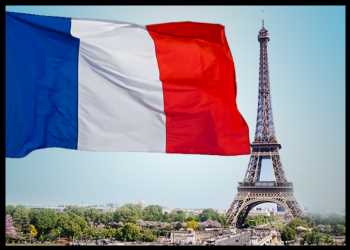France’s economic growth accelerated at a faster-than-expected pace in the second quarter, underpinned by household spending and investment, first estimates from the statistical office Insee revealed on Friday.
In July, consumer price inflation slowed to a three-month low, driven by the downturn in manufactured goods prices and the slowdown in services price growth, separate data from the Insee showed.
Despite the restrictions in place to curb the spread of coronavirus, gross domestic product rebounded 0.9 percent in the second quarter, after being flat in the first quarter. Economists had forecast a quarterly growth of 0.8 percent.
In the second quarter, GDP was 3.3 percent below the level of the fourth quarter of 2019, as compared to 4.2 percent in the two previous quarters, the statistical office said.
In the latest World Economic Outlook, the International Monetary Fund forecast the French economy to grow 5.8 percent in 2021 and 4.2 percent next year.
The expenditure-side breakdown of GDP showed that gross fixed capital formation growth accelerated to 1.1 percent in the second quarter from 0.4 percent in the preceding period.
Likewise, household consumption expenditure gained 0.9 percent after rising 0.2 percent a quarter ago.
Imports climbed 1.9 percent sequentially and exports advanced 1.5 percent. As a result, foreign trade made a slightly negative contribution to GDP growth by -0.1 points, after -0.5 points in the previous quarter.
Lastly, the contribution of inventory changes to the growth of the GDP was slightly positive this quarter, at 0.2 points.
Another report from the statistical office showed that household spending grew 0.3 percent in June after a sharp growth of 10.6 percent in May. This was also weaker than the economists’ forecast of 1.4 percent.
The increase in purchases of manufactured goods by 2.7 percent was offset by 1.6 percent declines in both food consumption and energy expenditure.
In a separate communiqué, the Insee said consumer price inflation slowed to 1.2 percent in July from 1.5 percent in the previous month. But this was above economists’ forecast of 1 percent.
Similarly, harmonized inflation eased less-than-expected to 1.6 percent from 1.9 percent in June. The expected rate was 1.4 percent.
Manufactured product prices dropped 1.1 percent, while food prices gained 0.8 percent. Services prices grew at a slower pace of 0.7 percent. Meanwhile, energy price inflation rose to 12.4 percent from 10.9 percent.
On a monthly basis, consumer prices edged up 0.1 percent, the same as in June. Prices were forecast to fall 0.1 percent.
The harmonized index of consumer prices grew 0.1 percent, slower than the 0.2 percent rise a month ago. Economists had forecast a monthly fall of 0.1 percent.
Source: Read Full Article
